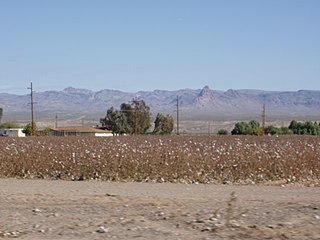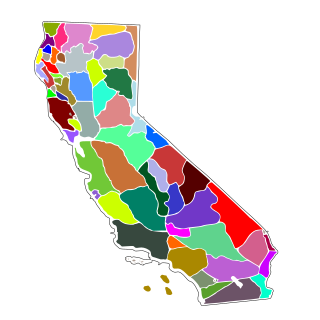
The Dawes Act of 1887 regulated land rights on tribal territories within the United States. It authorized the President of the United States to subdivide Native American tribal communal landholdings into allotments for Native American heads of families and individuals. This would convert traditional systems of land tenure into a government-imposed system of private property by forcing Native Americans to "assume a capitalist and proprietary relationship with property" that did not previously exist in their cultures. The act would declare remaining lands after allotment as "surplus" and available for sale, including to non-Natives. Before private property could be dispensed, the government had to determine "which Indians were eligible" for allotments, which propelled an "official search for a federal definition of Indian-ness."

The Indian Reorganization Act (IRA) of June 18, 1934, or the Wheeler–Howard Act, was U.S. federal legislation that dealt with the status of American Indians in the United States. It was the centerpiece of what has been often called the "Indian New Deal". The major goal was to reverse the traditional goal of cultural assimilation of Native Americans into American society and to strengthen, encourage and perpetuate the tribes and their historic Native American cultures in the United States.
Escheat is a common law doctrine that transfers the real property of a person who has died without heirs to the Crown or state. It serves to ensure that property is not left in "limbo" without recognized ownership. It originally applied to a number of situations where a legal interest in land was destroyed by operation of law, so that the ownership of the land reverted to the immediately superior feudal lord.

Intestacy is the condition of the estate of a person who dies without having in force a valid will or other binding declaration. Alternatively this may also apply where a will or declaration has been made, but only applies to part of the estate; the remaining estate forms the "intestate estate". Intestacy law, also referred to as the law of descent and distribution, refers to the body of law that determines who is entitled to the property from the estate under the rules of inheritance.

The Nonintercourse Act is the collective name given to six statutes passed by the Congress in 1790, 1793, 1796, 1799, 1802, and 1834 to set Amerindian boundaries of reservations. The various Acts were also intended to regulate commerce between settlers and the natives. The most notable provisions of the Act regulate the inalienability of aboriginal title in the United States, a continuing source of litigation for almost 200 years. The prohibition on purchases of Indian lands without the approval of the federal government has its origins in the Royal Proclamation of 1763 and the Confederation Congress Proclamation of 1783.

Cobell v. Salazar is a class-action lawsuit brought by Elouise Cobell (Blackfeet) and other Native American representatives in 1996 against two departments of the United States government: the Department of Interior and the Department of the Treasury for mismanagement of Indian trust funds. It was settled in 2009. The plaintiffs claim that the U.S. government has incorrectly accounted for the income from Indian trust assets, which are legally owned by the Department of the Interior, but held in trust for individual Native Americans. The case was filed in the United States District Court for the District of Columbia. The original complaint asserted no claims for mismanagement of the trust assets, since such claims could only properly be asserted in the United States Court of Federal Claims.

Lone Wolf the Younger was a Kiowa. Lone Wolf the Younger was a warrior named Mamay-day-te. In 1872, Mamay-day-te saved the son of Old Chief Lone Wolf, Gui-pah-gah, the Elder, during a skirmish with teamsters at Howard Wells, New Mexico. Two years later, the son of the Old Chief Lone Wolf, Gui-pah-gah, the Elder and his nephew were killed by American Troops. Mamay-day-te was among the raid avenging the deaths and counted his first coup during the attack. Old Chief Lone Wolf, Gui-pah-gah, the Elder gave his name to Mamay-day-te. Lone Wolf the Younger led the Kiowa resistance to United States governmental influence on the reservation, which culminated up to the Supreme Court case Lone Wolf v. Hitchcock.

The Uintah and Ouray Indian Reservation is located in northeastern Utah, United States. It is the homeland of the Ute Indian Tribe, and is the largest of three Indian reservations inhabited by members of the Ute Tribe of Native Americans.

Indian country jurisdiction, or the extent which tribal powers apply to legal situations in the United States, has undergone many drastic shifts since the beginning of European settlement in America. Over time, federal statutes and Supreme Court rulings have designated more or less power to tribal governments, depending on federal policy toward Indians. Numerous Supreme Court decisions have created important precedents in Indian country jurisdiction, such as Worcester v. Georgia, Oliphant v. Suquamish Tribe, Montana v. United States, and McGirt v. Oklahoma.
Solem v. Bartlett, 465 U.S. 463 (1984), was a United States Supreme Court case involving Indian country jurisdiction in the United States that decided that opening up reservation lands for settlement by non-Indians does not constitute the intent to diminish reservation boundaries. Therefore, reservation boundaries would not be diminished unless specifically determined through acts of Congress.

The United States was the first jurisdiction to acknowledge the common law doctrine of aboriginal title. Native American tribes and nations establish aboriginal title by actual, continuous, and exclusive use and occupancy for a "long time." Individuals may also establish aboriginal title, if their ancestors held title as individuals. Unlike other jurisdictions, the content of aboriginal title is not limited to historical or traditional land uses. Aboriginal title may not be alienated, except to the federal government or with the approval of Congress. Aboriginal title is distinct from the lands Native Americans own in fee simple and occupy under federal trust.
Ex parte Crow Dog, 109 U.S. 556 (1883), is a landmark decision of the Supreme Court of the United States that followed the death of one member of a Native American tribe at the hands of another on reservation land. Crow Dog was a member of the Brulé band of the Lakota Sioux. On August 5, 1881 he shot and killed Spotted Tail, a Lakota chief; there are different accounts of the background to the killing. The tribal council dealt with the incident according to Sioux tradition, and Crow Dog paid restitution to the dead man's family. However, the U.S. authorities then prosecuted Crow Dog for murder in a federal court. He was found guilty and sentenced to hang.
Fellows v. Blacksmith, 60 U.S. 366 (1857), is a United States Supreme Court decision involving Native American law. John Blacksmith, a Tonawanda Seneca, sued agents of the Ogden Land Company for common law claims of trespass, assault, and battery after he was forcibly evicted from his sawmill by the Company's agents. The Court affirmed a judgement in Blacksmith's favor, notwithstanding the fact that the Seneca had executed an Indian removal treaty and the Company held the exclusive right to purchase to the land by virtue of an interstate compact ratified by Congress.

Aboriginal title in California refers to the aboriginal title land rights of the indigenous peoples of California. The state is unique in that no Native American tribe in California is the counterparty to a ratified federal treaty. Therefore, all the Indian reservations in the state were created by federal statute or executive order.

The Supreme Court of the United States, under Chief Justice Roger B. Taney (1836–1864), issued several important decisions on the status of aboriginal title in the United States, building on the opinions of aboriginal title in the Marshall Court.

An Organic Act is a generic name for a statute used by the United States Congress to describe a territory, in anticipation of being admitted to the Union as a state. Because of Oklahoma's unique history an explanation of the Oklahoma Organic Act needs a historic perspective. In general, the Oklahoma Organic Act may be viewed as one of a series of legislative acts, from the time of Reconstruction, enacted by Congress in preparation for the creation of a unified State of Oklahoma. The Organic Act created Oklahoma Territory, and Indian Territory that were Organized incorporated territories of the United States out of the old "unorganized" Indian Territory. The Oklahoma Organic Act was one of several acts whose intent was the assimilation of the tribes in Oklahoma and Indian Territories through the elimination of tribes' communal ownership of property.
United States v. Mitchell, 463 U.S. 206 (1983), was a case in which the Supreme Court of the United States held that the United States is accountable in money damages for alleged breaches of trust in connection with its management of forest resources on allotted lands of the Quinault Reservation.
United States v. John, 437 U.S. 634 (1978), was a case in which the Supreme Court of the United States held that lands designated as a reservation in Mississippi are "Indian country" as defined by statute, although the reservation was established nearly a century after Indian removal and related treaties. The court ruled that, under the Major Crimes Act, the State has no jurisdiction to try a Native American for crimes covered by that act that occurred on reservation land.
Babbitt v. Youpee, 519 U.S. 234 (1997), was a United States Supreme Court case in which the Court held that a provision which escheats property to tribe upon owner's death any fractional interest in allotment which constitutes less than two percent of the allotment and has not produced $100 in income over the past five years, unless it is devised or descends to owner of another fractional interest in the allotment, works an unconstitutional taking.
Texas v. New Jersey, 380 U.S. 518 (1965), is a United States Supreme Court decision handed down on February 1, 1965. Concerning the authority of the state to escheat, or take title to, unclaimed personal property, the Court was petitioned, under its power of original jurisdiction, to adjudicate a disagreement between three states, Texas, New Jersey, and the Commonwealth of Pennsylvania, over which state had the jurisdiction to escheat intangible personal property, such as debts. Recognizing the lack of any extant constitutional or statutory formula to decide jurisdiction, the Warren Court accepted the case, assigning a Special Master to compile evidence and recommend a solution that the states could use for similar cases in the future. Adopting the Special Masters suggestions, the Court, in a decision authored by Justice Hugo Black, ruled that the authority to escheat intangible personal property lay with the state of the creditor's last known address, rather than the state of the debtor's incorporation or headquarters, a formula used in previous cases.










